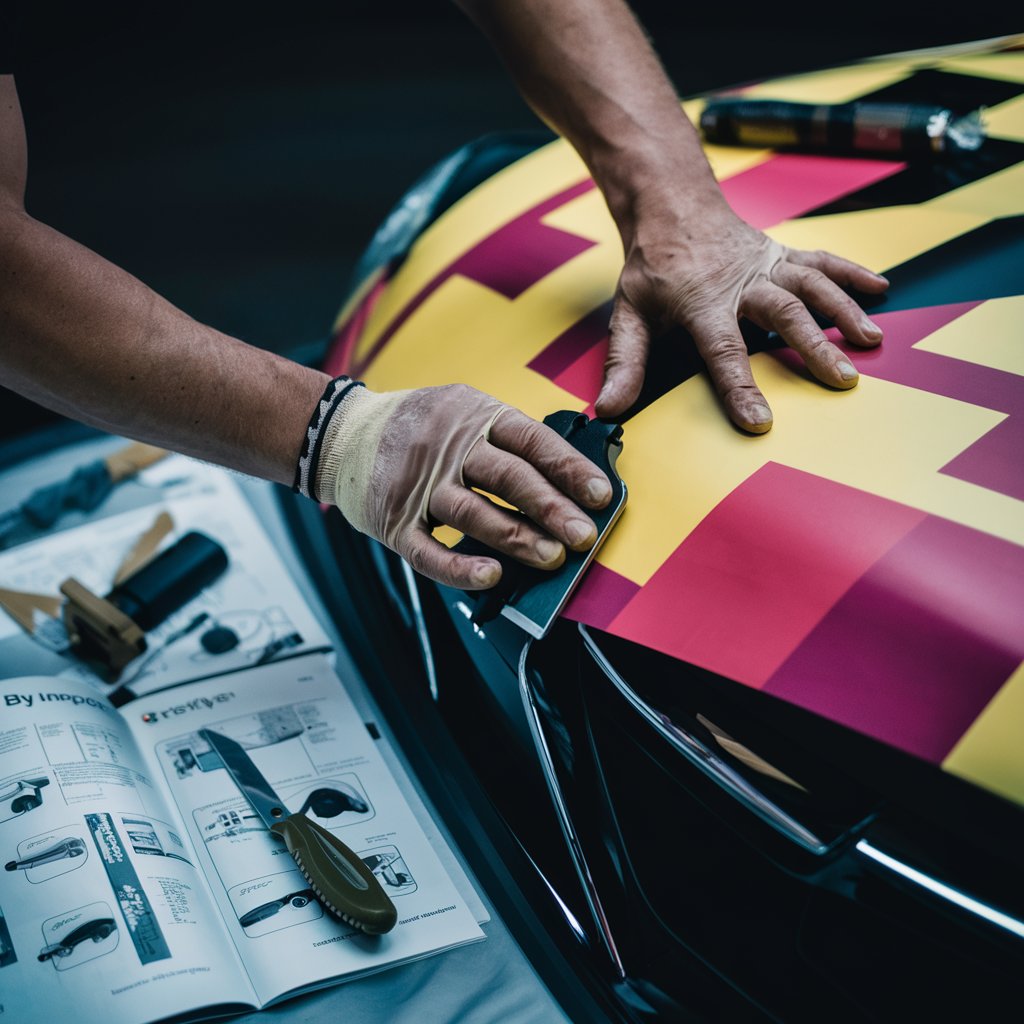Avoiding Common Mistakes in Vinyl Wrap Application

The application of vinyl wrap is a nuanced task that requires precision, patience, and a solid understanding of the material’s properties. Whether for vehicle aesthetics, advertising, or surface protection purposes, it is important to avoid common mistakes that can compromise the quality and longevity of the finish. These errors include surface contamination, improper handling, and inadequate post-heating. While seemingly inconsequential, they can lead to issues like poor adhesion, bubble formation, and premature peeling.
With a meticulous approach and a thorough understanding of the application process, these pitfalls can be easily avoided. It is crucial to explore the most frequent errors and the best strategies to circumvent them. This will ensure a flawless and durable vinyl wrap application.
Understanding Vinyl Wrap Application Errors
Diving into the realm of vinyl wrap application errors, it’s crucial to comprehend the common mistakes and pitfalls that can compromise the quality and lifespan of the final product.
Inadequate preparation of the surface is a common mistake, leading to weak adhesion and premature peeling. Not using an application tool, or using it incorrectly, can result in bubbles and wrinkles, damaging the overall aesthetic.
Ignoring post-heating, a critical step in vinyl wrap application, can lead to the vinyl lifting from recesses. An incorrect choice of vinyl for the specific application can also prove detrimental.
These errors not only affect the look of the wrap but also its durability. Understanding these pitfalls can help in achieving a flawless, long-lasting vinyl wrap.
Effective Strategies for Flawless Application
To ensure a seamless and durable vinyl wrap application, it is imperative to follow a set of proven strategies.
Proper surface preparation is the first step. Start with thorough cleaning of the surface to remove any contaminants. This step is crucial to ensure the vinyl adheres properly without any issues.
Next, judicious use of application tools is essential. Carefully choose the right tools for application, like squeegees and heat guns, to avoid air bubbles and ensure smooth adhesion. Using the correct tools can make a significant difference in the final outcome of the vinyl wrap.
Post-heating is another important strategy. Post-heating is vital to activate the adhesive and prevent shrinkage. This step helps the vinyl wrap conform better to the surface and enhances its longevity.
Lastly, an appropriate selection of vinyl is key. Select the right vinyl for your project, considering factors like durability, flexibility, and color. Choosing high-quality vinyl that suits your specific needs can ensure a successful and long-lasting vinyl wrap application.
These strategies, when executed meticulously, promise a flawless vinyl wrap application, inviting you into the community of expert applicators.